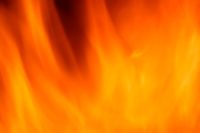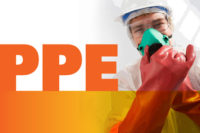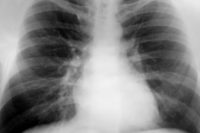 The National Fire Protection Association has issued a safety alert on self-contained breathing apparatus (SCBA) facepiece lenses, recommending that fire departments, fire academies, and emergency service organizations inspect all lenses before and after each use. Any SCBA facepiece lens found to have cracks, crazing, bubbling, deformation, discoloring, gaps, or holes should be immediately removed from service and a replacement issued.
The National Fire Protection Association has issued a safety alert on self-contained breathing apparatus (SCBA) facepiece lenses, recommending that fire departments, fire academies, and emergency service organizations inspect all lenses before and after each use. Any SCBA facepiece lens found to have cracks, crazing, bubbling, deformation, discoloring, gaps, or holes should be immediately removed from service and a replacement issued.
The alert came after several NIOSH Fire Fighter Fatality investigations and additional research found SCBA facepiece lenses may undergo thermal degradation when exposed to intense heat – something firefighters can encounter during fires. The degradation reduces the protection meant for the user’s respiratory system and exposes the user to products of combustion and super heated air.
Self- Contained Breathing Apparatus (SCBA) is a critical component in the personal protective equipment (PPE) used by today’s fire service. This equipment is essential for allowing fire fighters to operate in hostile fire ground environments. However, in recent decades there have been significant shifts with the environments encountered by structural fire fighters and how they operate in those environments.
Structure fires involving modern building construction and furnishings produce significantly higher heat release rates than legacy buildings and their furnishings of earlier years, exposing firefighters to more rapid heat development and intense thermal conditions.
PPE used by firefighters has evolved to provide enhanced overall thermal protection, allowing firefighters to remain in adverse conditions for longer time periods. However, enhanced PPE has made them less able to detect changing thermal conditions.
During the investigation of firefighter fatalities that occurred from 2002 to 2011, NIOSH found evidence of thermal degradation of facepiece lenses that may have been a contributing factor in three fatalities. In the fatality cases, the firefighters were likely still “on air” at the time they were overrun by extreme thermal conditions; all had their SCBA facepiece still in place; all had SCBA facepieces that displayed extensive damage consistent with thermal conditions that likely exceeded the capabilities of the SCBA facepiece lens, resulting in the loss of respiratory protection from an Immediately Dangerous to Life and Health (IDLH) environment. The firefighters in these incidents suffered thermal injuries to their respiratory system and sustained inhalation injuries from products of combustion.
NIOSH also reported on the investigation of three SCBA from a state training academy where the SCBA facepiece lens showed evidence of thermal degradation after being used in live fire training. Additionally, in four other NIOSH Line of Duty Death Investigations, the evidence, while not conclusive was suggestive of possible SCBA degradation or failure.
The full alert and recommendations can be found at www.nfpa.org/scba.


